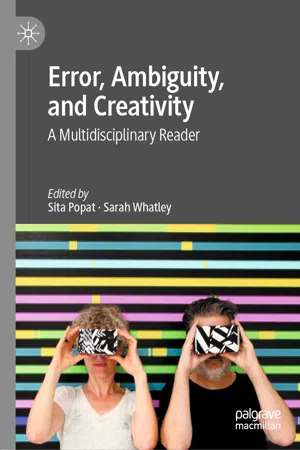Introduction
This paper revolves around a series of media art projects that adopt, develop and present creative uses of technological errors and glitches in order to subvert the logic, processes and aesthetics of digital mapping technologies. The scope of this paper is threefold. The first is to frame these media art projects as a heterogeneous set of strategies of counter-mapping that artists have adopted in response to the rise of mapping technologies such as Google Maps, Google Street View and Google Earth. The concept of counter-mapping is advanced in relation to the topical example of Google mapping technologies and a more general tactical exploitation of technological errors. It is based on both the idea of erring, wandering and going astray as a form of tactical creativity, and the material possibility of exploiting or producing errors within a mapping system with non-productive, poetic and dysfunctional goals in mind. Counter-mapping implies a specific kind of subjective movement: simultaneously symbolic, physical and affective. The second scope of this paper is to describe the subjects (artists, educators, activists, etc.) behind counter-mapping strategies as media-flâneurs and media-flâneuses: experimental practitioners of new forms of networked wandering. Finally, the third scope is that of sketching the image of the map as dispositif: an ever-changing net of subjects and objects, articulated across different spaces and media, constituting the background of any counter-mapping practice.
Google Mapping
“From the very beginning of cartography” writes Giuliana Bruno in Atlas of Emotion, “mapping was a transitory activity” (273). For Bruno, cartographic impulses have always been characterized by “the need to establish parameters and to (dis)locate one’s own body along with them” and by ways and technologies for “securely mapping the viewer in space” (271). If bodies, subjects, affects and technologies can all be mobilized by a map, it is because a map is not a self-contained object, thing, device or tool. As this paper will make clear, the map is best understood as an expanded dispositif that regulates bodies and engenders subjectivities, a complex mechanism that is at the basis of any mapping and counter-mapping activity. Building upon Michel Foucault’s concept of the dispositif and of Giorgio Agamben’s apparato, I argue that the map is coextensive with a wide interlocking of subjects, discourses, things and visibilities (Foucault 1971, 1972, 1975; Deleuze 1988, 1990, 1992; Agamben 2006). This large assemblage has a disciplinary function and, as recent studies of real-time mapping in urban spaces have made clear, it manages reality more than it represents it (Picon 2015). The map makes specific things visible, sayable and thinkable at a given time, while it relegates others to the realms of the unthinkable, the unspeakable and the invisible. Google’s mapping project offers the perfect exemplification: it consists of a layered dispositif revolving around two main poles: Google Maps, with its emphasis on routing and navigation, and Google Earth, with its emphasis on geo-visual exploration. When considered in its entirety, the assemblage of Google services, platforms and technologies presents the world as a seamlessly searchable, movable and navigable representation. To this assemblage of techniques and technologies, as I will show, correspond specific map-users whose behavior responds to what the map makes possible. What is being delineated here, then, is a cartographic ecosystem in which maps are not only representations but an active part of layered operations (e.g., data collection, profiling and geolocation), so that while subjects operate with a map, that map in turn operates on them.
Technical descriptions of how Google mapping is configured (in terms of hardware, software, services, business arrangements and applications) can easily become outdated because of the company’s constant updates. Nevertheless, we must remember that Google mapping began as a series of mapping experiments in the early 2000s and has grown to offer navigable photo-panoramas in 3D and cartographic maps in 2D through Google Maps and Google Street View, 3D navigable aerial and satellite views through Google Earth, along with the celestial representations of Google Sky—making it the most used and widespread mapping technology in the world. The set of algorithmic (and political) operations performed by its assemblage of services and technologies was recently summarized by Scott Contreras-Koterbay and Lukasz Mirocha as: “[a process of] analog to digital conversion[s] of any kind of world-related, textual and geospatial information as well as visual sensations, commonly known as digitalization [followed by] processing, organizing and sharing all this information with interested parties, from advertisers to common users” (25). Google mapping is predicated on “curating” and “mobilizing” content. Its mission is built upon a constant movement, the foundation for any form of mapping and exploration, here defined in the form of the digital movement of its users and their data, and in that of the geopolitical movements of the company itself at a global level.
It is also important to remember that despite the great innovations introduced by Google, its mapping services are based on historically rooted ideas like immersive mapping experiences and seamless navigation across different perspectives. The “Galleria delle carte geografiche” at the Vatican Palace, commissioned by Pope Gregory XIII in 1580, provides a useful example. It consists of a 120-meter-long gallery featuring maps depicting the Italian territory in great accuracy and from different perspectives, ranging from close-ups of cities and ports, to bird’s-eye views of entire regions. The Vatican’s gallery presupposes multiple mobile voyeurs, or users, circulating within an immersive environment open to social exchanges. It should remind us that Google’s use of contemporary technologies to construct its maps as fluid interfaces is just the latest chapter in a long history of immersive mapping technologies. When considered in its entirety, Google mapping can be understood as a contemporary map room able, in Bruno’s words, to “conflate in one place new knowledge of the physical world, […] extending from geography to cosmography […] reaching beyo...
